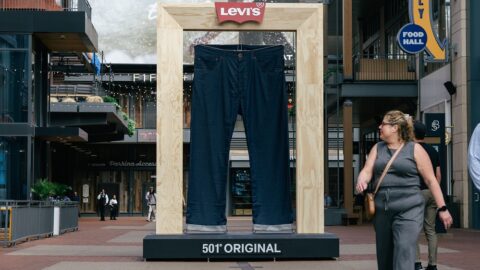 A customer’s experience in how user-friendly and accessible a location is can be the differentiating factor in a competitive market. There are many variables involved when designing a custom retail space that reflect a brand and caters to the customer.
A customer’s experience in how user-friendly and accessible a location is can be the differentiating factor in a competitive market. There are many variables involved when designing a custom retail space that reflect a brand and caters to the customer.
Here are four ways that retail business leaders can develop authentic connections with a customer base through attention to detail.
1. The Waiting Game
Nobody likes to wait, but sometimes you just have to. The beauty of walking into a custom coffee house is knowing the barista will prepare your craft coffee precisely how you like it — and that can take time. Say it takes three minutes to prepare your beverage of choice. What can retailers do to make the wait pleasant?
Advertisement
Create a defined waiting space that provides ample elbow room for patrons to stand, or lean, while the barista is preparing the order. The beauty of not being bumped or relocated for those few minutes makes the experience more pleasurable. And, retail managers know that creating a happy customer increases the repeatability prospects.
R&D TIP: Spend the time up front to walk the space as a customer would, see how it feels to read the menu, place an order, then wait around for a few minutes. If any aspect feels awkward or unnatural go the extra mile — be it custom signage or a defined pathway.
2. Move To The Beat
No doubt about it, music can impact customer mood and perception of wait time. Even if people are not actively listening, selecting the right genre, tempo and volume level is essential throughout the day.
R&D TIP: Invest in a radio program or sound track that is customized to your business environment. Read into brain science matters for your target demographic to ensure the type of music playing is working for you, not driving business away.
3. The Comfort Factor
Ergonomics is an essential element that plays a role in the comfort factor. There is a direct correlation to how long a customer spends in your retail space and the number of dollars spent. Create areas that allow for a natural, comfortable posture when sitting or standing.
In the coffee world, standing bars are ideal since they cater to individuals and pairs. Communal tables are custom built to foster a sense of community in those who seek social interaction with their coffee.
R&D TIP: Create spaces for sitting and standing that are deliberate and make sense. In the fitting room, for example, offer a comfortable place to remove shoes. Likewise, provide space for people to hang a wet coat and umbrella during inclement weather.
4. Avoid A Traffic Jam
Upon entering a new location, most people will quickly scan the room. Some seek the menu, others the order counter, some will want to quickly grab a seat and wait for friends. To simplify and provide ease in the traffic flow, create a clear visual path that people can follow.
When possible make the ordering experience less painful, even fun. Use visual design elements so people can interact with your brand and feel the culture. Some products can even spark memorable experiences. At our newest location, we integrate barn-board wood and handmade steel counters to give a feel of a historic farmhouse in an urban setting.
R&D TIP: Integrate materials that will give an essence of your company and brand. When possible seek an architect or design partner that will help capture your culture and define your personality through material selection and design elements.
Go Forth, Create
Most often we see user experience principles applied on the Internet. As business leaders, we can translate everyday activities — like a morning coffee run – into a complete brand experience by paying close attention to details. Take your personal peeves in retail spaces and use them to propel your brand (and profits) forward by pleasing customers and gaining edge over the competition.
David Lanning is CEO and co-founder of Dave’s Coffee, a craft coffee roaster based in Rhode Island. Lanning is a tech-savvy entrepreneur who attributes his success to on-point branding, strategic thinking and old fashion trial-and-error. He has more than 20 years in retail business, ranging from product marketing to wholesale distribution. For more information visit www.davescoffee.com or call 800-483-4436.









